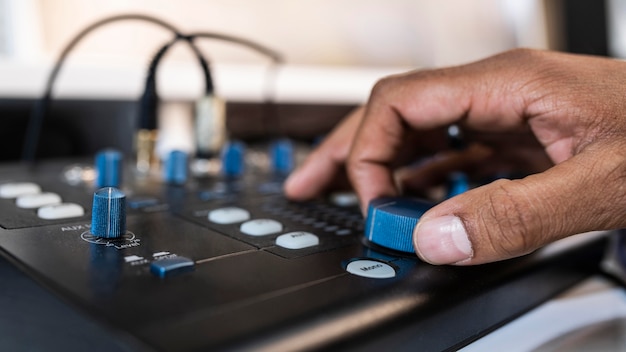Eradicating the Blues: Test & Measurement Innovations

Dieter Mahnken and Ute Philipp from Rohde & Schwarz discuss how you can effectively perform RF and audio tests on Bluetooth components using a single instrument.
Today, almost all new cars come with Bluetooth hands-free systems. These Bluetooth connections between your smartphone and the car’s infotainment system can be used for a variety of functions. To make sure everything—from the headset and speakers to the infotainment system and smartphone—works smoothly together, each component must go through RF and audio testing.
When developing new radio components, engineers face complex and costly test procedures. These tests need to be quick and reproducible. Additionally, certification from authorized testing bodies is required to market and sell these components, which can be expensive. However, with the right test and measurement tools, engineers can conduct precertification tests in their labs to gauge whether their components will pass the certification process. There are wideband radio communications testers approved by the Bluetooth Special Interest Group (SIG) for this purpose. These testers can manage RF and audio tests throughout development, production, and servicing. They also allow users to simulate real-world conditions for networks like Bluetooth, WLAN, LTE-A, WCDMA, and GSM.
Bluetooth technology has come a long way from just being used for headsets. Now, it supports many additional functions that can be transferred from a smartphone to the car’s infotainment system and speakers. Primarily used for transmitting audio data and control commands, Bluetooth lets users make phone calls, upload contact lists, play music, and even have text messages read out loud. Some systems allow drivers to control smartphone apps using the car’s infotainment system, such as navigation or traffic updates, weather forecasts, and finding nearby amenities like hotels, gas stations, or restaurants.
Regarding audio transmission, Bluetooth Classic specifications from the Bluetooth SIG are the standard. With data transfer speeds ranging from 0.7 to 2.1 Mbit/s and an adaptive frequency hopping method, Bluetooth Classic is a reliable short-range radio technology effective up to 10 meters, even in noisy environments.
Although Bluetooth Low Energy (BLE), also known as Bluetooth Smart, has been available since the 2010 release of Bluetooth 4.0, it is not used for audio transmissions. Both Bluetooth Classic and BLE have been evolving side by side.
Bluetooth Classic includes a synchronous link for voice (SCO) and an asynchronous link for data (ACL). Different Bluetooth profiles manage the transmission of audio signals over the synchronous link. For instance, the hands-free profile (HFP) transmits audio from a driver’s microphone to the infotainment system and back to the smartphone using the CVSD codec at a maximum rate of 64 kbit/s. The advanced audio distribution profile (A2DP) is for stereo music playback from devices with a Bluetooth interface.
Per Bluetooth standards, A2DP sources must support the SBC audio codec, which is license-free. During SBC-based music transmission from a smartphone, the device decompresses the usually compressed music and then recompresses it using the SBC algorithm for Bluetooth transmission.